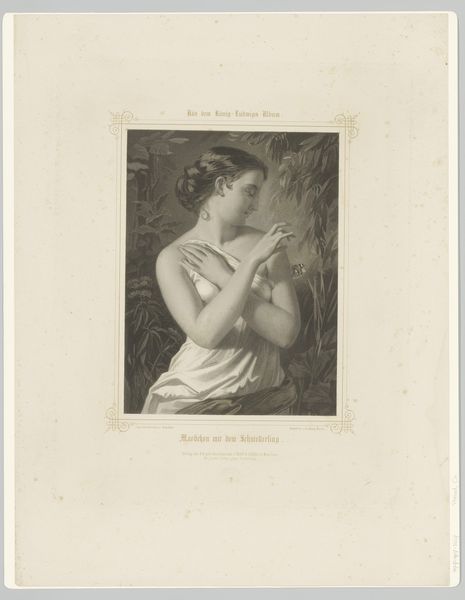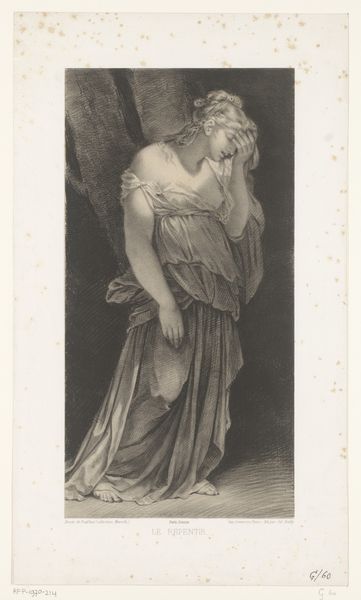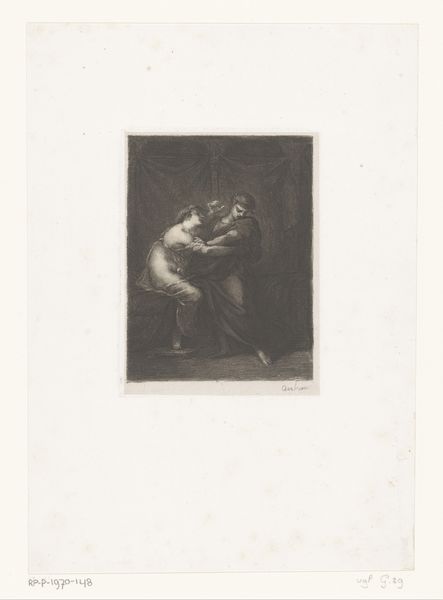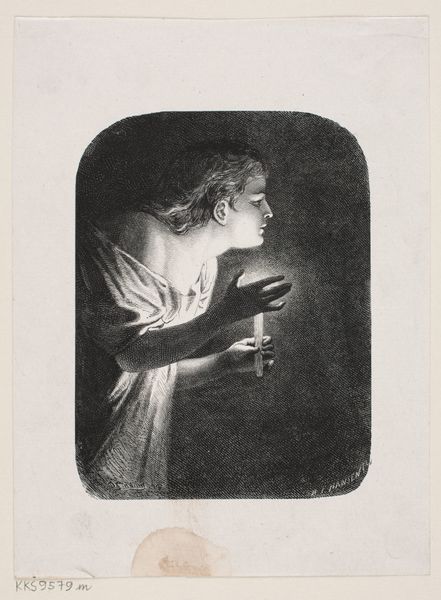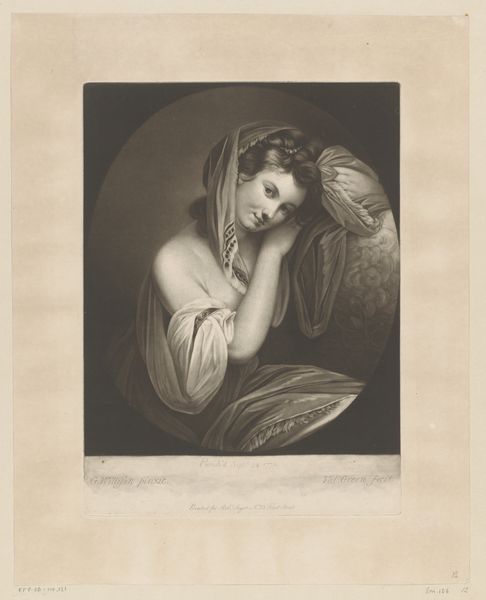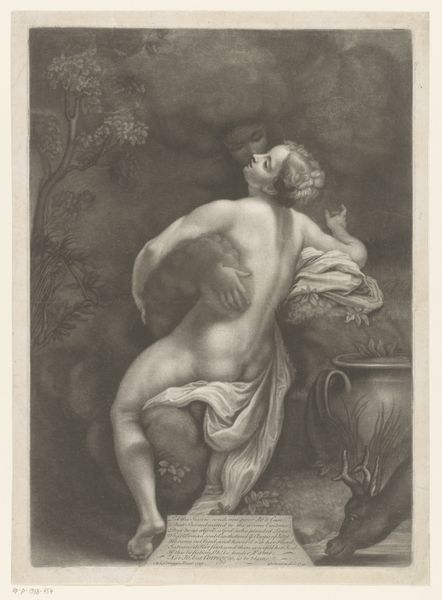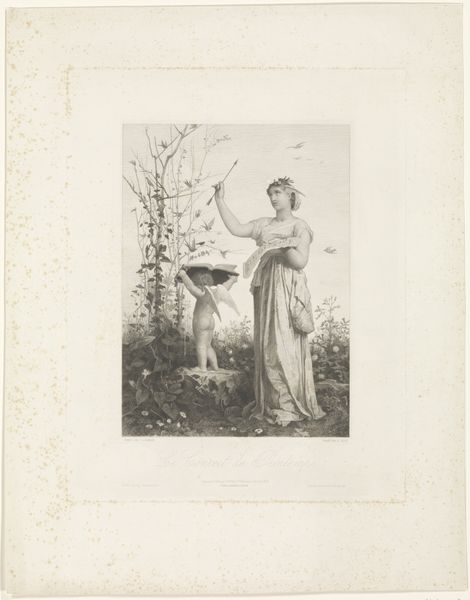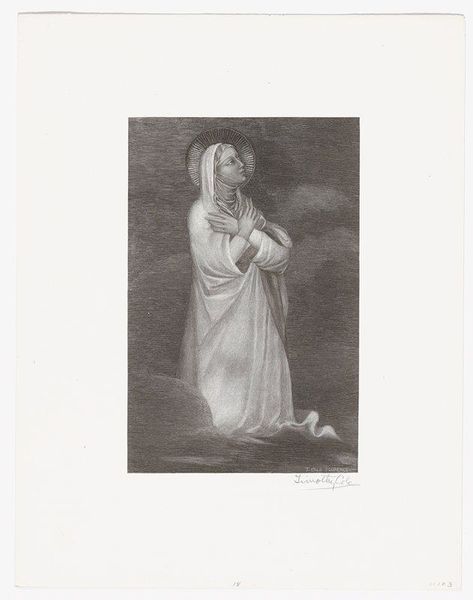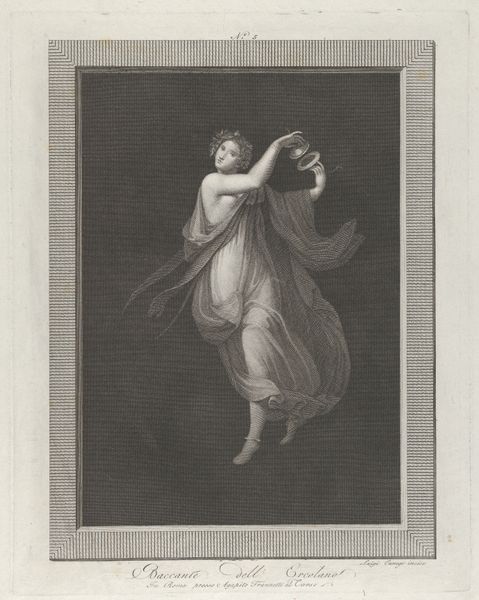
Dimensions: height 445 mm, width 297 mm
Copyright: Rijks Museum: Open Domain
Editor: This is Hermann Eichens' "Maria Magdalena treurend aan het kruis," an engraving from somewhere between 1827 and 1879. The composition, with its archway framing Mary Magdalene, really emphasizes her isolation and grief. What can you tell me about this work? Curator: It’s essential to recognize that Eichens, working in the Romantic era, grapples with the portrayal of women in religious contexts, continuing centuries-long art traditions that reflected complex gender dynamics and often restricted women's roles. This image, on the surface, appears devout, but what happens if we read Mary's emotional display not just as religious fervor, but as an expression of social constraints imposed on women of that era? Editor: That's an interesting way to approach it. It makes me wonder if the focus on her emotional distress is highlighting, rather than simply depicting, her limited agency. Curator: Precisely. Think about the prevailing cultural narrative of the time. How might Eichens' choice to depict Mary in this vulnerable state comment on the societal expectations placed on women, where displays of emotion were sometimes their only permitted form of expression or power? Is this image actually reinforcing or subverting those expectations? Editor: So, instead of a straightforward religious image, it's prompting us to question the role of women within the church and society at large? Curator: Yes. It allows us to analyze how art becomes a vehicle for social commentary, consciously or unconsciously reflecting and potentially challenging the established power structures of its time. These historical depictions offer potent insight into the ongoing conversations around gender, religion, and representation. Editor: This gives me so much to consider regarding the relationship between art and the cultural contexts it emerges from! Curator: Absolutely. Bringing those social contexts into our art analysis makes for a richer and more complete understanding.
Comments
No comments
Be the first to comment and join the conversation on the ultimate creative platform.
